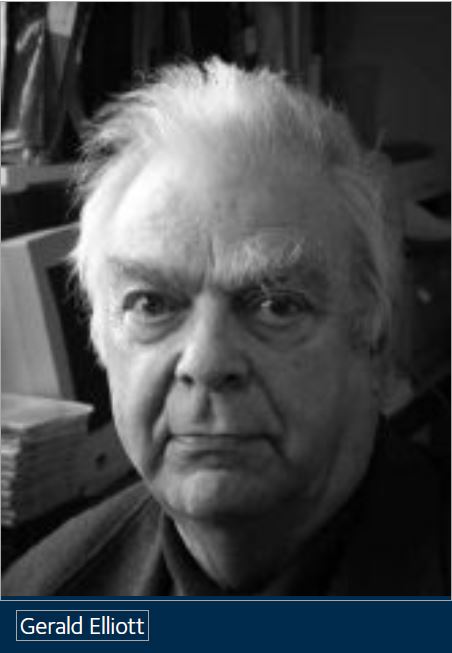
Physiology News Magazine
Obituary: Gerald Elliott
1931–2013
Membership
Obituary: Gerald Elliott
1931–2013
Membership
Austin Elliott
https://doi.org/10.36866/pn.91.54

Gerald Elliott, biophysicist and founding Professor of Physics at the Open University (OU), died unexpectedly in hospital in Oxford late on 6 March, aged 82.
Gerald was born on 26 January 1931 in Eltham, son of a prosperous city solicitor. However, the war badly affected his father’s business and the family lost nearly everything, including their home. Fortunately Gerald was able to complete his schooling at Eltham College and win a place to read Physics at Oxford. He went to Lincoln College in 1951 after national service in the Royal Engineers.
At Oxford Gerald met many life-long friends and decided to go into scientific research, identifying ‘low temperature physics, or applying physics to biology’ as the cutting-edge areas. It was reading the famous 1953 Nature papers on DNA that tipped the balance. In 1954 Gerald joined the King’s College Biophysics Group, sharing a lab bench initially with Rosalind Franklin’s former PhD student Ray Gosling. He stayed at King’s for most of the next 18 years.
Gerald’s arrival at King’s coincided with the publication of the papers that launched the sliding filament theory of muscle. One of the authors, the microscopist Jean Hanson, became Gerald’s PhD supervisor as he embarked on the study of the contractile mechanism that was to preoccupy him to the end of his life. He did pioneering EM and x-ray diffraction work on molluscan, and later mammalian, muscle, including the first x-ray patterns from contracting muscle in 1962–4. He described this work, and the early King’s years, in a 2007 Physiology News article (Issue 67, p6-10).
At the end of the 60s Gerald and family (first wife Deborah and sons Austin and Gavin) spent a Sabbatical year at Carnegie Mellon University (1968–69) and three idyllic summers at the Woods Hole Marine Biological Laboratory. Gerald then became Professor at the newly established Open University, setting up a biophysics research unit in Oxford, where he remained until retirement in 1996.
During the late 60s Gerald became interested in the forces that maintain filament spacing in the muscle lattice. He became convinced these forces must play a key part in the contractile mechanism, something that put him increasingly at odds with mainstream thinking on muscle. Gerald developed measurements of Donnan potentials with microelectrodes in skinned muscle, and in protein gels, as an empirical way to measure the net charges on proteins. In the 70s at the OU he began a parallel research programme on cornea, another filament array, applying the same concepts there with great success. After his OU retirement Gerald continued scientific work at Cardiff University, where several of his cornea post-docs and PhD students had relocated, publishing his last experimental paper in 2011 and a review setting out his thinking on muscle in 2012. He was sad that his ideas on muscle were not more widely discussed within the muscle research community, but he remained philosophical. “Time will tell” he would say.
Gerald joined The Physiological Society in 1978, but attended Society meetings for over 50 years, delivering his first communication in 1959 and his last at Dublin in 2009. He prized the meetings as a way to communicate new data and ideas. Gerald also belonged to several other scientific societies; at the time of his death he had just been elected an Honorary Member of the British Biophysical Society.
Perhaps as a consequence of his early life, family was always immensely important to Gerald, and he took great delight in his five grandchildren. He was perhaps at his happiest at the Brittany farmhouse he renovated with his second wife, Katalin, where he would entertain assorted family and an extensive selection of friends and former and current colleagues.
